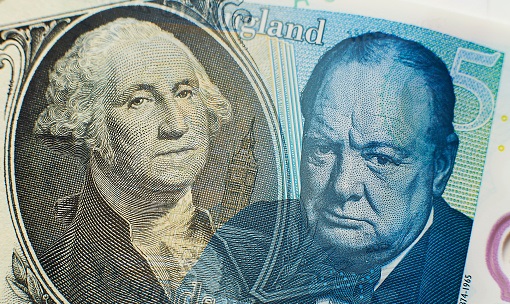Risk appetite is a little better at the start of the new week. Admittedly, global equity indices are lower (FSTE World Index -0.2%), but that is because Asian equites played “catch-up” to losses seen on Wall Street last Friday after Asia bourses closed. Looking at major US and European bourses on Monday gives a better indication as to risk appetite this Monday; E-mini S&P 500 futures are up about 0.5% and European equities have erased early losses to trade in the green (Stoxx 600 +0.3%). However, for the S&P 500, today’s half a percent gains only amount to a modest recovery of last Friday’s losses, when the index convincingly dropped below the 4200 level. At present, S&P 500 futures trade in the 4180s and some analysts suspect today’s move higher might in the end amount to nothing more than a “dead cat bounce”, though others counter that buying the dip has time and time again been a winning strategy over the last year and a half.
As a reminder, last week’s losses in the index were triggered by the more hawkish than expected FOMC meeting, which saw the bank’s dot-plot shift from signalling no hikes through to 2024 to signalling the likelihood of two 25bps hikes by the end of 2023. This has seemingly dented market participant’s growth and inflation expectations, as most aptly demonstrated by the downside being seen in long-term inflation expectations and nominal government bond yields. 10-year US government bond yields went below 1.40% during the overnight session and 30-year yields received a lot of attention on Friday when they briefly dipped under 2.00%, multi-month lows for both. Meanwhile, short-end US bond yields (like the 2-year yield) moved higher to reflect the possibility of rate hikes by the end of 2022. MUFG comment that “while the Fed is unlikely to become overly concerned by the unfavourable price action at this early stage, it does provide a cautionary signal”, before adding that the Fed may have gone too far with last week’s hawkish pivot, which may have dented market participant’s confidence in the Fed’s commitment to its new average inflation target. MUFG note the importance of this week’s Fed speakers, stating that “it would provide some relief for market participants if the Fed attempted to push back against the overly hawkish interpretation of their latest policy update… (and) unless the Fed attempts to dampen market concerns, there is a clear risk that reflation trades will continue to unwind in the near-term”. In other words, if Fed members push back against last week’s hawkish post-FOMC reaction this week, we could see upside in inflation expectations, bond yields and most probably also in stocks and commodities (and likely downside in the US dollar). But if they do not, the trade seen at the end of last week (higher USD, lower bond yields, stocks, commodities and inflation expectations) may continue.
Price action in G10 FX markets mirrors the better risk appetite being seen in other asset classes (such as stocks), with the safe-haven US dollar having now erased pre-European open gains and the DXY back from 92.30 highs to just above 92.00. Risk sensitive NZD, AUD and GBP are the best performing currencies on the day, each up 0.4%-0.5% on the session so far versus the US dollar, enough to see NZDUSD climb back to the north of the 0.6950 level, to see AUDUSD reclaim 0.7500 to the upside and GBPUSD bounce firmly from the 1.3800 handle to the upper 1.3800s. Risk appetite seems to be the reason for the outperformance of these currencies, with domestic news playing second fiddle this morning; preliminary Australian Retail Sales data released overnight for the month of May was weaker than expected at 0.1% MoM growth (forecasts were for a growth rate of 0.5%), while news that the UK is unlikely to bring forward the next stage of lockdown easing to the 5th of July (from the 19th of July) has not impact sterling much. Looking ahead, GBP traders will have their hands full on Thursday with the BoE rate decision where some will look for the bank to adopt a more hawkish tone in lockstep with the FOMC last week. Elsewhere in FX, EUR and CAD are both up about 0.3% versus the buck on the session, lifting EURUSD back towards the 1.1900 handle from earlier session lows around 1.1850 and pushing USDCAD back towards 1.2400 from earlier session higher 1.2500, both a function of the slightly weaker US dollar. Euro traders will be on notice for comments from ECB President Lagarde later in the session. Finally, JPY is one of the laggards in the G10 alongside its fellow safe haven the US dollar, weighed by slightly higher stock prices. If today’s modest recovery in risk appetite does amount to nothing more than a dead cat bounce, as some strategists/analysts suspect it might (especially if FOMC members are sounding hawkish this week), then JPY’s performance may again improve as risk assets begin to suffer again.
Sticking with FX; as is the case with other asset classes, FX market participants are awaiting the barrage of Fed speak this week, including a testimony from Fed Chair Jerome Powell on Tuesday to Congress, which will be used to further align expectations for the timeline of Fed policy normalisation in wake of last week’s more hawkish than anticipated FOMC meeting. The tone of FOMC members is set to be the key factor driving the US dollar and thus USD major pairs this week and, as MUFG argue above, the USD could well be hurt if FOMC members deliberately push back against the recent hawkish market reaction (i.e. by sounding dovish). ING counter that Fed policy tightening expectations are “likely to be a dollar positive against the developed market low-yielders, particularly those currencies in Europe and Japan which have not enjoyed the terms of trade gains of the commodity exporters”. With regards to the implications for the DXY, the bank notes that while “it has come a long way quite quickly… after some consolidation may well break above resistance in the 92.40 area towards the late March high of 93.44 – equivalent to EUR/USD trading down to the 1.1700 area”.
Finally, turning to commodities; crude oil prices remain underpinned this morning close to recent highs, with WTI in the mid-$71.00s and Brent in the mid-$73.00s. Central bank related volatility has only been having a modest impact on crude oil prices via the avenue of overall market risk appetite and as long as that doesn’t crater (i.e. we don’t see a huge drop in stocks), the focus in crude oil markets is likely to remain predominantly on crude specific fundamentals, which as discussed last week, are mostly bullish; demand continues to surge in the Northern Hemisphere as developed nations reopen amid vaccine rollouts and the peak summer driving season comes into focus and amid expectations that oil markets are going to be undersupplied for the rest of the year (due to OPEC+ output cuts), which will put pressure on oil inventories. This narrative of undersupply is being further driven home by reports that OPEC+ members are predicting a slow recovery in US crude oil production back to pre-Covid-19 levels. Inventory data this week will be one key theme to watch, as will ongoing US/Iran negotiations, which might see more progress with Iranian Presidential elections now out of the way. Elsewhere in commodities, gold is seeing decent gains on the day, with spot prices having recovered from the $1760s back to current levels in the $1780s. This is still well over $100 below recent peaks above the $1900 level, with gold having been severely dented after long-term growth and inflation expectations seemingly took a knock in wake of last week’s FOMC rate decision and the outlook for short-term interest rates rose. Looking ahead, what happens with US real yields is likely to return as an important driver of gold prices.
The Day Ahead
As detailed above, Fed speak this week is the key focus of market participants. Things kick off with FOMC members Bullard and Kaplan, both of whom are speaking at 1445BST in a discussion on the US economic outlook at the OMFIF event. Influential FOMC member and NY Fed President John Williams is then set to give remarks at 2000BST. Looking further ahead, we have FOMC member Daly and Fed Chair Jerome Powell speaking on Tuesday, FOMC members Bowman and Bostic on Wednesday, and then Bostic and Williams then both speak again on Thursday. Other Fed members will likely also be on the wires.
Back to today, ECB President Lagarde is scheduled to speak twice today, with her speech to the EU Parliament at 1515BST slated as the more important appearance. ING suspect that the ECB may continue to “encourage the wedge between US and eurozone monetary policy, such that the trade-weighted EUR cheapens up even more”. Otherwise, there is very little data or other events of any importance to be on the lookout for. Crude oil traders would be wise to keep an eye on geopolitical developments with regards to the US and Iran in wake of the weekend Presidential election in the latter and amid the ongoing nuclear deal discussions.
Looking ahead to the rest of the week and Fed speakers aside, other key events of note include Eurozone, UK and US preliminary June Manufacturing PMI surveys and Canadian Retail Sales on Wednesday, the June German IFO survey, BoE Rate Decision and US Durable Goods Orders and weekly jobless claims on Thursday, followed by May US Core PCE numbers and US University of Michigan Consumer Sentiment data on Friday.




